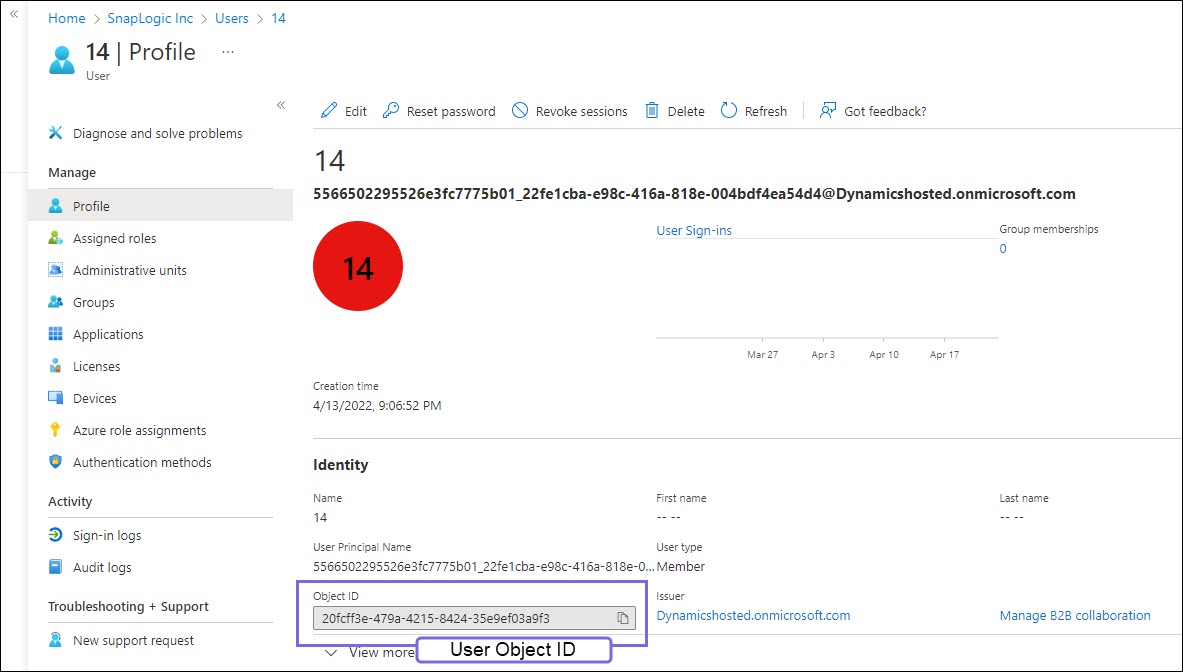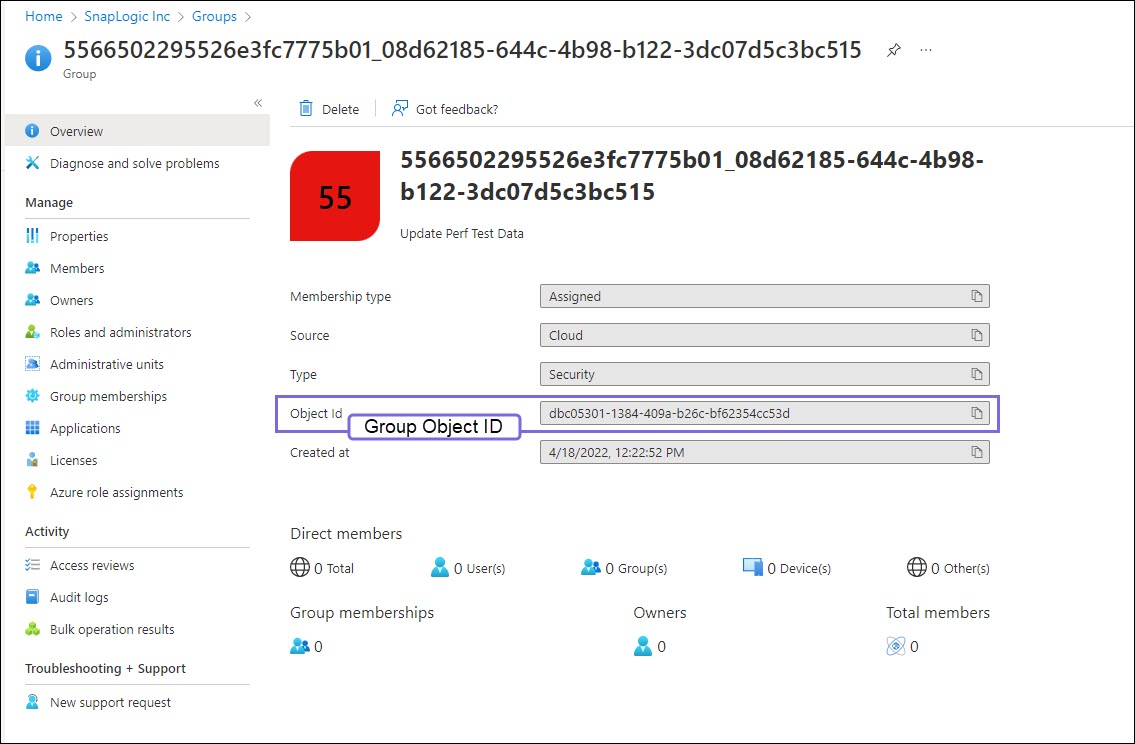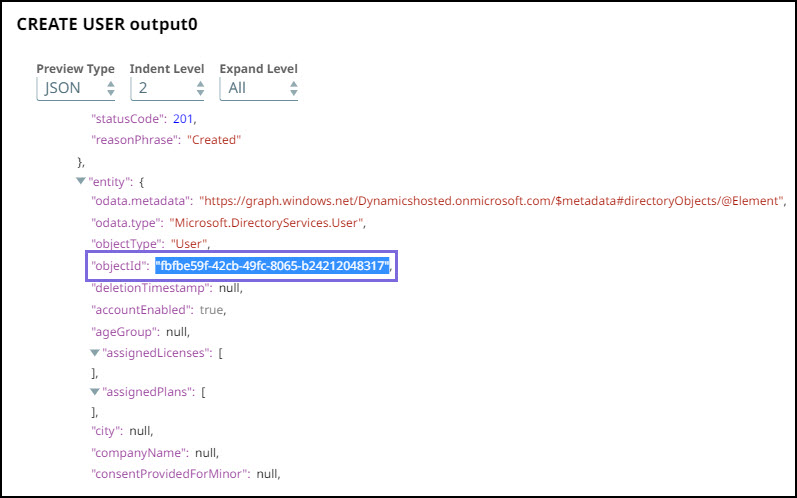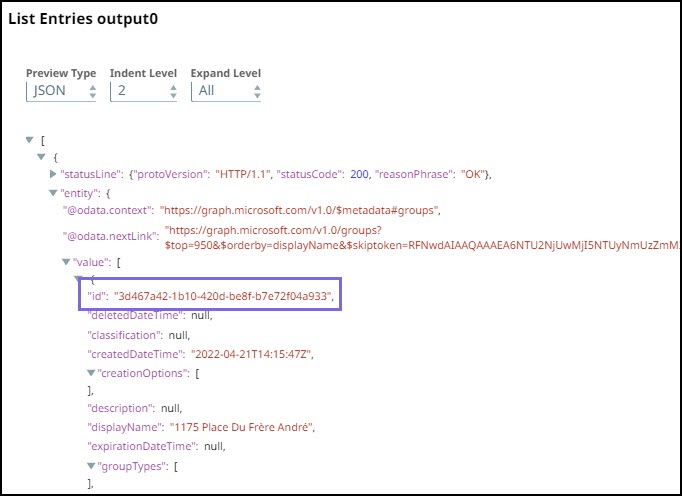On this Page
Snap type: | Write | |||||||
|---|---|---|---|---|---|---|---|---|
Description: | This Snap adds or removes a given user to/from a given role.
| |||||||
| Prerequisites: | [None] | |||||||
| Support and limitations: | Works in Ultra Pipelines. | |||||||
| Account: | This Snap uses account references created on the Accounts page of SnapLogic Manager to handle access to this endpoint. See Active Directory Basic Auth Account for information on setting up this type of account. | |||||||
| Views: |
| |||||||
Settings | ||||||||
Label | Required. The name for the Snap. You can modify this to be more specific, especially if you have more than one of the same Snap in your pipeline. | |||||||
User object ID | Required. Object ID of the user to be added or removed. Default value: [None] | |||||||
Operation | Required. Action to be performed (Add or Remove). Default value: Add to Group | |||||||
Role Object ID | Required. Object ID of the destination role. | |||||||
Snap execution | Select one of the three modes in which the Snap executes. Available options are:
| |||||||
Obtaining User object ID/Role object ID/Group object ID from Azure Portal
Log in to the Azure portal.
Navigate to Azure Active Directory>Users/Groups.
Select a specific User/Group.
In the Profile, you can view the Object Id.
Copy the Object ID and use it to configure the relevant Snap as required.
Many features in Microsoft Graph API work similarly to the Azure Active Directory Graph APIs. However, a few have been changed or improved. For instance, there is a variation of the entity names in the output preview. This table depicts the difference in the output:
Old output (Azure AD Graph API) | New Output (Microsoft Graph API) |
|---|---|
The entity object Id property was displayed as “ Learn more about the properties in Azure AD Graph API: | The object Id property is displayed as “ The output also contains the default parameters shown by the Microsoft Graph API. However, there are certain attributes such as Learn more about the properties in Microsoft Graph API:
|




